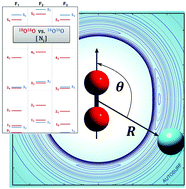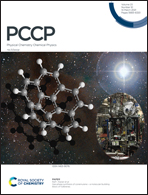Inelastic scattering in isotopologues of O2–Ar: the effects of mass, symmetry, and density of states
Abstract
The two species considered here, O2 (oxygen molecule) and Ar (argon-atom), are both abundant components of Earth's atmosphere and hence familiar collision partners in this medium. O2 is quite reactive and extensively involved in atmospheric chemistry, including Chapman's cycle of the formation and destruction of ozone; while Ar, like N2, typically plays the nevertheless crucial role of inert collider. Inert species can provide stabilization to metastable encounter-complexes through the energy transfer associated with inelastic collisions. The interplay of collision frequency and energy transfer efficiency, with state lifetimes and species concentrations, contributes to the rich and varied chemistry and dynamics found in diverse environments ranging from planetary atmospheres to the interstellar and circumstellar media. The nature and density of bound and resonance states, coupled electronic states, symmetry, and nuclear spin-statistics can all play a role. Here, we systematically investigate some of those factors by looking at the O2–Ar system, comparing rigorous quantum-scattering calculations for the 16O16O–40Ar, 18O16O–40Ar, and 18O18O–40Ar isotope combinations. A new accurate potential energy surface was constructed for this purpose holding the O2 bond distance at its vibrationally averaged distance.



 Please wait while we load your content...
Please wait while we load your content...